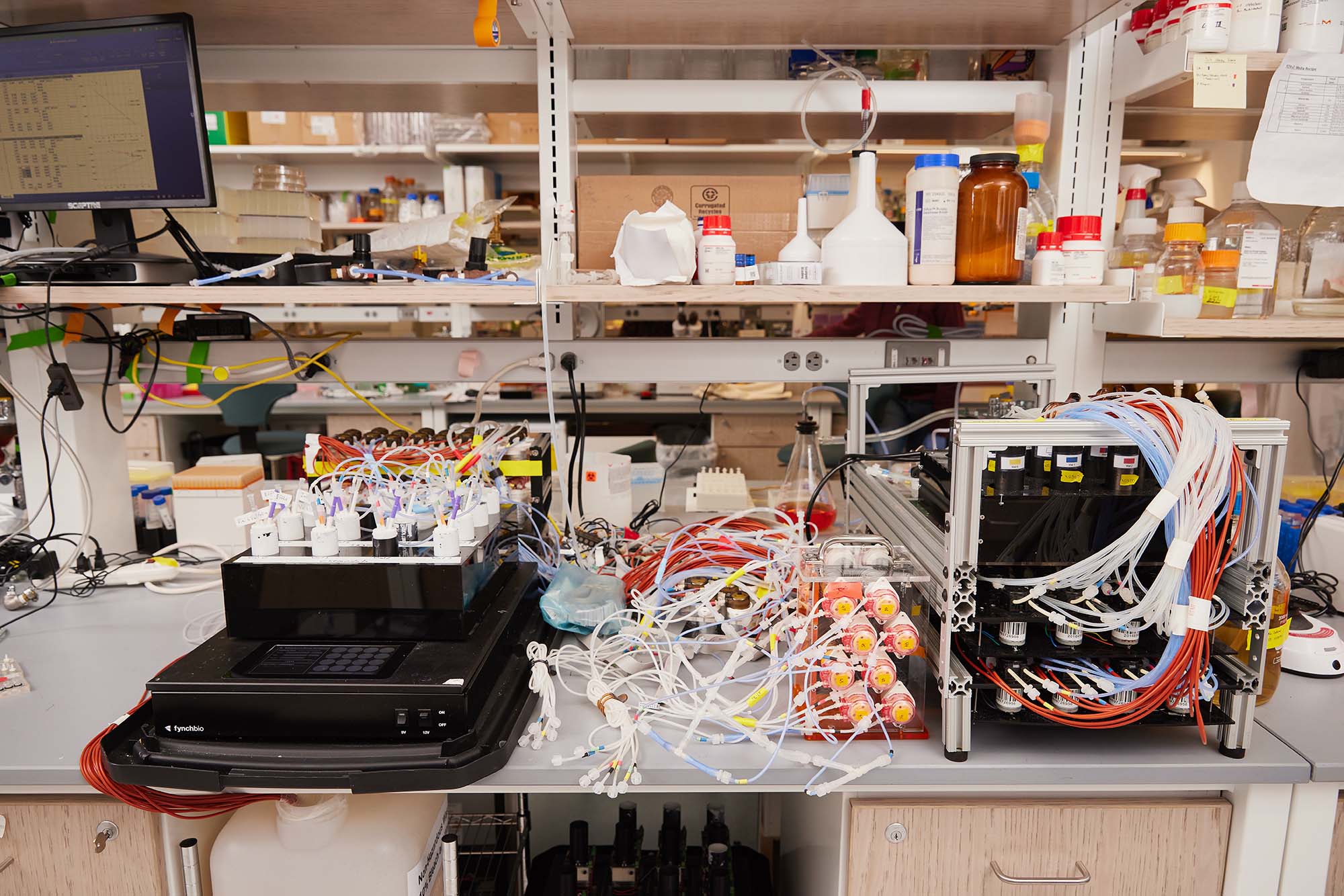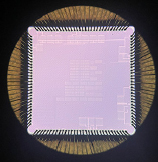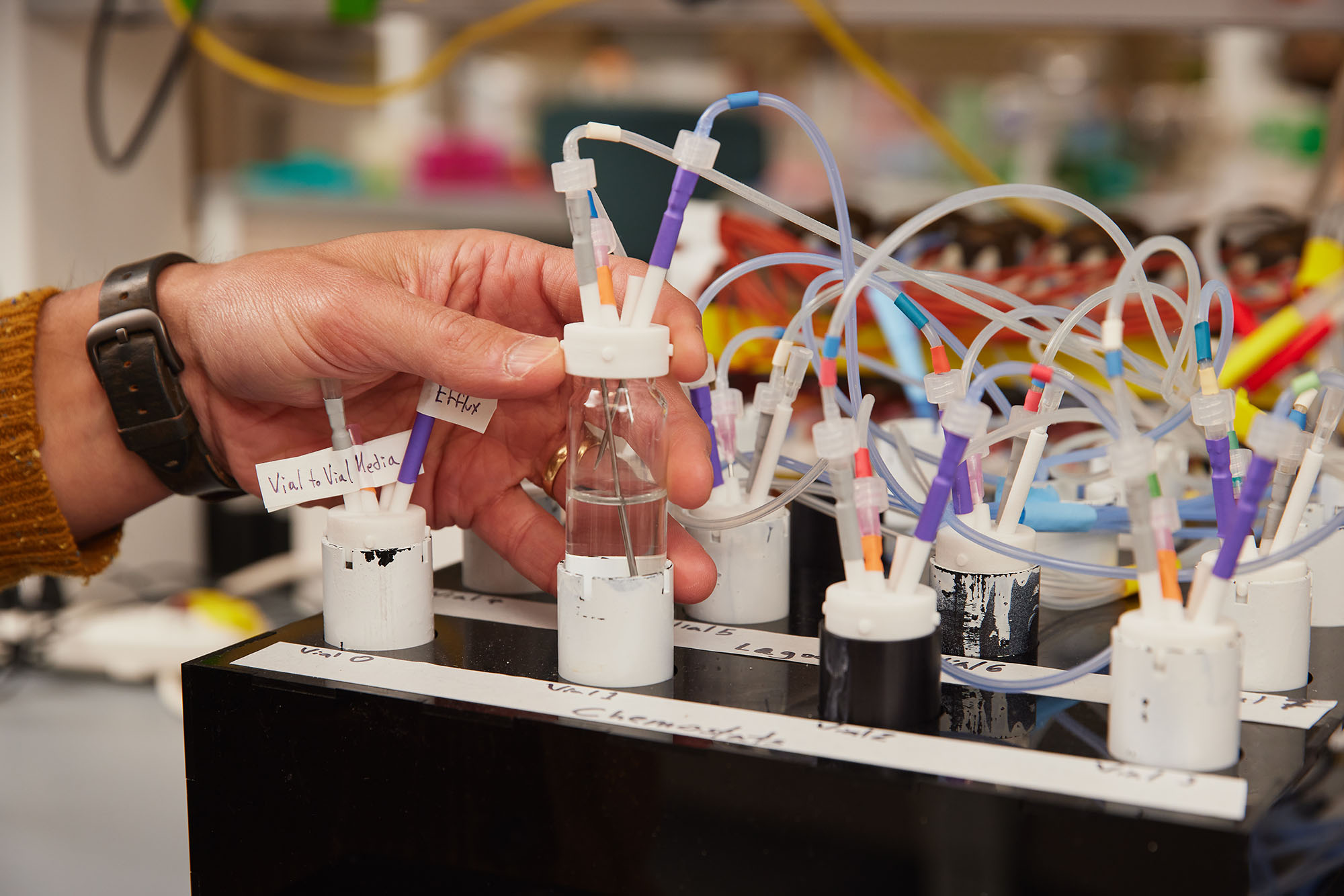As all green-thumbed gardeners know, rotting fruits and vegetables-gnawed-on apple cores, discarded potato peels-are a precious resource. Let them bubble away in a composter and they become a nourishing food for flower beds and vegetable gardens. Engineers know it too. The nutrients produced by decaying food can also be used in biomanufacturing, helping fuel bioreactors, devices that can synthesize new substances.
Instead of smokestacks pumping toxins into the atmosphere, biomanufacturing makes use of naturally occurring microorganisms and processes, like those generated by rotting food scraps, to make everything from medicines and gene therapies to cleaner and greener materials, machine oils, detergents, fuels, fabrics, fragrances, and even foods. It has the potential to revolutionize industry while dramatically cutting carbon emissions. But in the United States in particular, the biomanufacturing sector needs to grow significantly, especially if we're to avoid supply chain disruptions and security breaches.
At the Boston University College of Engineering, a crossdisciplinary trio of researchers is helping to make a smarter, more efficient bioreactor. They're part of a team that was recently awarded a $3 million grant from Schmidt Futures and the US Department of Defense, funding given in partnership with bioindustrial manufacturing consortium BioMADE and as part of a federal push for more and better bioreactors. The BU engineers-Ahmad ("Mo") Khalil, Rabia Yazicigil, and Douglas Densmore-are collaborating with experts from Capra Biosciences, Inc., a start-up behind a cutting-edge bioreactor technology.
Capra's bioreactor-known as a continuous flow device-uses biofilm, essentially a layer of slime hospitable to bacteria. They've already used it to create a petroleum-free skin cream and plan to turn it to producing biological, rather than petrochemical, lubricants for motors and other machinery. But refining and replicating the company's innovative platform on a grand scale will require automation and novel quality-control and security measures, which is where the BU team-with backgrounds in genetic engineering, electronics, and automation-comes in.
"This kind of convergence of disciplines is amazing. It is the future in terms of where advances in biotechnology are coming from, and BU is definitely at the forefront," says Capra cofounder Andrew Magyar. "We want to engineer organisms to help us make products sustainably and cost-competitively, so consumers won't have to decide, 'Do I want the sustainable option or the cheap option?'"
The BU team has already proposed an ingenious series of design solutions that will allow the company to turn an unpredictable jumble of food, manure, and other waste products into a reliable final result, as well as monitor the whole process with tiny sensors that can float in a bioreactor. They also have a plan for allowing other researchers nationwide to adapt their work and create replica bioreactors producing multiple life-changing, and planet-saving, products in a vast range of fields.
Transforming Waste
Khalil began his career as a mechanical engineer, but today he is better known as a pioneer of synthetic biology. In particular, his team builds molecular "circuits," and they have translated these insights into gene circuit engineering platforms that enable the programming of human cells, such as immune cells, for a new generation of cellular therapies that might one day be used to combat diseases such as cancer.
"We like to ask the simple yet bold questions, 'What if we built it?' and 'What can we learn from this process?'" says Khalil, an ENG professor of biomedical engineering. "That inverse approach to the study of biology forces one to question prevailing assumptions, and it can lead to surprising results."
Khalil, who also serves as an advisor to Capra, is the inventor of a small-scale bioreactor system called eVOLVER, a customizable, automated platform that can remotely monitor and manage hundreds of cell cultures-when researchers grow cells in a controlled environment-in real time for a variety of applications. Now in use in more than 50 universities, this DIY open-source system is infinitely adaptable, allowing researchers to create custom microbial experiments.

One of Capra's objectives is to develop new methods for working with complex waste-based feedstocks-the material left over after bacteria break down manure and food scraps that gets fed into a bioreactor-but a challenge with that kind of material is variability in its makeup. By running a slew of experiments with eVOLVER, Khalil aims to rapidly optimize the process, allowing different types of waste-based feedstocks to turn out a consistent level of product-in this case, retinol (vitamin A) to start with.
Khalil is also adapting his invention for the project-adding custom parts to help precisely control fluid flow and culture conditions. "By the end of 18 months, we want to have a fully automated biofilm reactor pilot plant that can continuously produce more than one kilogram of vitamin A per day," says Yazicigil, an ENG associate professor of electrical and computer engineering.
Monitoring Progress and Ensuring Security
Yazicigil's expertise is in electronics, but she is more than a dabbler in biology. Some of her recent work includes designing an ingestible capsule that monitors gut health with the aid of a tiny sensor that runs on ultralow power. She's adapting that technology to produce sensors that will float inside the bioreactor and measure the levels of PH, oxygen, glycerol, lactate, and various organic acids. The sensors will even evaluate the electric potential of the biofilm.

"Traditionally, bioreactors are monitored with bulky instruments or complex probes that have to be inserted in holes in the lid or side," Yazicigil says. By contrast, her tiny sensors, running on mere nanowatt-level power, will wirelessly transmit the measurements in real time, allowing technicians to adjust the flow of nutrients as needed.
A crucial part of her task is making the communications secure, Yazicigil says, and her team is working with Capra to make security integral to the sensors.
"We need to protect against communication attacks, like eavesdropping, or jamming attacks, which would impact communication between the sensors and the hub," she says. "I have to tailor the sensor chips to fit the system needs of this bioreactor technology. It's an exciting project. It involves start-ups, defense, academia, biomedical and electrical and computer engineering. It's powerful to bring these all together."
Scaling Up, Sharing Breakthroughs
To truly scale up the modified bioreactor, the operation will also need to take advantage of BU's Design, Automation, Manufacturing and Processes (DAMP) Lab, led by Densmore, an ENG professor of electrical and computer engineering. He's been working in synthetic biology research since 2007 and has expertise in developing electrodes for microfluidics and robotics for high-throughput testing.
The heavily automated DAMP Lab offers accelerated services such as DNA cloning, bacteria growth, and RNA sequencing for faster research results in synthetic biology. It recently did double duty as a major part of BU's award-winning Clinical Testing Laboratory, which processed up to 6,000 COVID tests of faculty, staff, and students per day during the pandemic. Now, the lab is getting ready to run biofilm-focused experiments on several eVOLVERs at once.

For Densmore, the product is not (or at least not only) retinol, but the process itself. By sharing the BU team's results, technical reports, and methods with the other 140 members of the BioMADE consortium, Densmore will be helping to propagate a replicable system for converting all sorts of bio-based feedstocks into all manner of useful products.
Replicability is key, Densmore explains. To tackle global challenges from cancer to climate change, he says, "We need more eyes on these problems. To do that, we need to lower the barrier to entry-but safely. So, we centralize the manufacturing infrastructure," within a certain number of certified labs like BU's, "and distribute the computational infrastructure."
To start with, BioMADE researchers will remotely order up experiments, and Densmore and his team will carry them out. In the longer term, Densmore envisions members of the research community at large downloading the DAMP Lab's software, as well as the list of hardware used and assembly directions, to build their own bioreactors.
"That's how we democratize biology with computing," he says. Instead of hoarding its secret sauce, as Densmore puts it, BU in a sense will franchise the DAMP Lab, standardizing equipment, software, and processes all over the country. But because BU's bioreactor solution is infinitely adaptable, those replica labs won't be producing identical studies and products. Other researchers will apply their creativity and generate their own solutions.
Using one more food analogy, he points out that most people don't bake their own bread, because it's simply not an efficient use of their time. But in biology, too much time is sunk into tasks that would be better automated and standardized, freeing researchers to use their minds.
"Pragmatically, that's the only way to advance science and society," Densmore says. "Right now, biology is baking a lot of bread." By making BU's packaged sliced bread available everywhere, "I'm saying, 'Let's get to making some cool sandwiches.'"
A version of this article originally appeared in ENGineer magazine.






